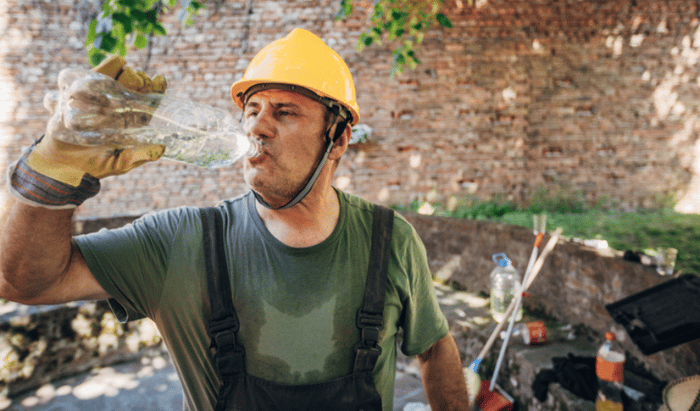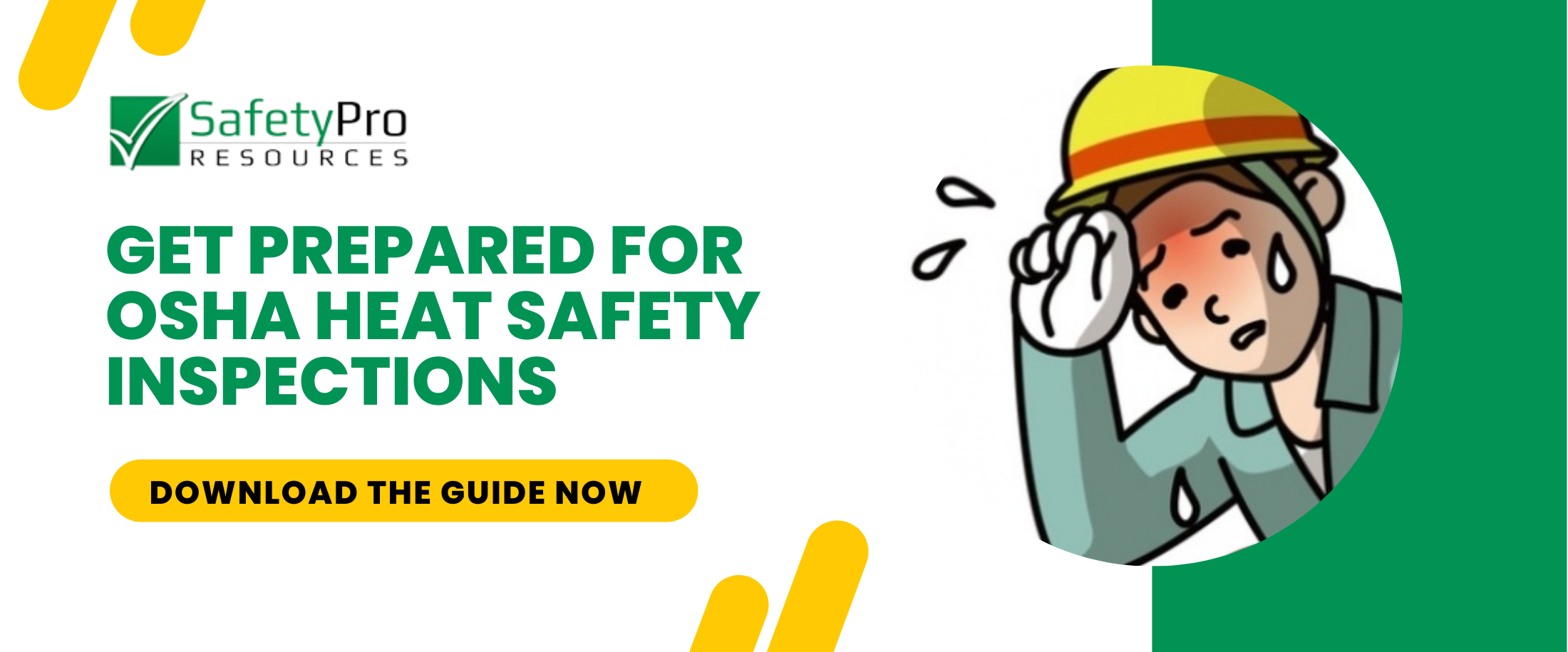
It takes a change of just 1.8 degrees before the human body begins to behave and respond abnormally. In fact, exposure to high heat causes more than a third of all U.S. work-related deaths.
For this reason, OSHA is prioritizing heat safety to help reduce the number of illnesses, injuries, and deaths due to heat illness by addressing the lack of heat safety policies in the workplace.Often, the person with heat illness develops confusion and is not aware that something is wrong. It’s important to look out for each other on hot construction sites and to know what symptoms to look for in your co-workers.
What is Heat Illness?
Heat illness is the collection of conditions resulting from exposure to heat. Workers can be exposed to heat-related events both indoors and outdoors depending on multiple factors, including outside temperature. Even in a climate-controlled building, workers may be required to enter areas without these temperature controls.
Preventative measures are the best way to address heat illnesses, and recognizing the early signs of trouble can stop it from worsening. Let’s dive into the most common types of heat illnesses and the symptoms you and your co-workers will want to look out for.
Heat Stroke
The most serious of all heat-related illnesses, heat stroke is a medical emergency that can result in death. Heat stroke occurs when the body temperature rises above 104 degrees, and it can no longer regulate its normal heating and cooling system. Symptoms of heat stroke include:
- Confusion
- Loss of coordination
- Excessive sweating, or lack of sweat entirely
- Pounding headache
- Loss of consciousness
- Seizures
If a co-worker or employee is suffering from heat stroke, immediately call 911. Move the worker to a cooler space, either indoors or in a nearby shaded area.
Once the employee is out of the direct heat, remove as much of their clothing as you can. Place a wet cloth or ice all over their body, or wet their clothes with cool water. Use powered fans or wave pieces of cardboard to circulate the air around the worker.
These steps can help regulate and drop body temperature while you wait for emergency services to arrive.
Heat Exhaustion
The second-most serious heat illness, heat exhaustion occurs when the body gets warmer than 100 degrees. Typically caused by a hot environment and loss of fluid from sweating, you will experience dehydration and the loss of critical electrolytes. This impacts your body’s ability to regulate its temperature.
Heat exhaustion can rapidly deteriorate into heat stroke, so it’s important to recognize and treat it immediately. Typical signs of heat exhaustion include:
- Excessive thirst
- Heavy sweating
- Headache
- Dizziness,
- Weakness
- Nausea
- Irritability
If you recognize any of these symptoms in a co-worker, take immediate action and move them to a cooler location. Encourage them to sip water or an electrolyte sports drink. Place a cold cloth or ice pack on their pulse points, such as the back of the neck or insides of the elbow and wrist, to help cool them down quickly.
While your co-worker may feel better after a short rest, they should still be evaluated by a medical professional before returning to work. If their symptoms worsen, treat it like heat stroke and call 911 immediately.
Heat Cramps
Heat cramps are painful muscle spasms caused by the loss of salt and electrolytes from excessive sweating. They typically occur after strenuous, physical work in a hot environment, and are felt in the legs, arms, back, or abdomen.
Related Content: How to Protect Workers from Heat Stress
Heat cramps are an early warning sign of trouble and must be taken seriously. If you or a co-worker start to feel the pains for these muscle spasms, move to a cool area and drink juice or a sports drink.
Avoid pushing yourself with demanding work for several hours, and if the cramps do not subside or get worse, or if you have heart problems or other health conditions, seek medical attention as soon as possible.
Heat Rash
A heat rash is a common problem found on the elbows, neck and groin. It’s typically caused by sweating and appears as small blisters or pimples. While not immediately life threatening, a heat rash can be very uncomfortable and can impact overall productivity. Keeping the area dry, using powder (not creams) and taking frequent breaks in cooler areas can help prevent and manage a heat rash.
Prevent Heat illness in construction
Preventing heat illness in construction requires a prevention program overseen by a competent, designated safety professional. Key prevention measures should include:
- Identifying heat hazards, including temperature, humidity, sun exposure and physical exertion.
- Identifying personal hazards, such as underlying health conditions, personal risk factors, and required clothing/PPE.
- Ensuring employees are acclimated to working in hot conditions. Over the course of several weeks, new employees should be given a small amount of work in the hot environment with the workload steadily growing each day. Even experienced workers should have their workload reduced during a heat wave. If your employer does not have an acclimation policy in place, you should insist on one.
- Maintaining up-to-date heat safety training for employees and supervisors, including hazard assessment, heat illness symptom identification and appropriate treatment.
OSHA recognizes the seriousness of heat-related illness and stresses prevention with a "Water, Rest, Shade" prevention guideline. Water should be available for each employee, and you should drink a cup every 15 minutes. Modified work/rest schedules in addition to acclimation should be followed to ensure no one is being pushed beyond their body’s limits. Shady areas or air-conditioned units should be provided for rest periods.
You and your co-workers have the right to safe working conditions, and this includes when working in high heat. Information, hazard identification, training and "water, rest, shade" can mitigate the risk of serious harm. By knowing the risk factors and symptoms of heat illness, you and your co-workers can help keep each other safe on the job-site.


















